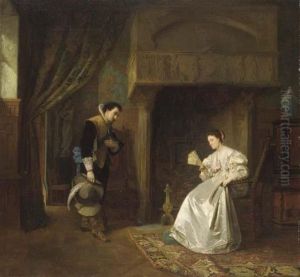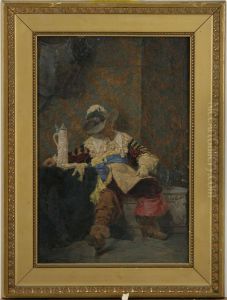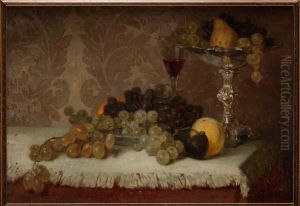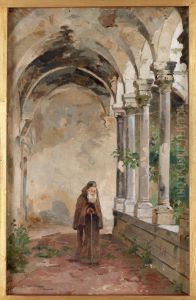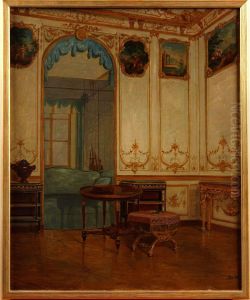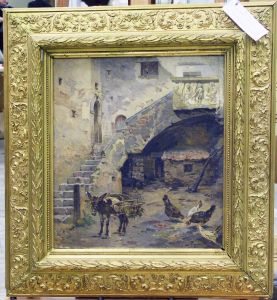Agnes, Agneta Borjesson Paintings
Agnes (Agneta) Borjesson was a Swedish painter born on January 20, 1827, in Stockholm, Sweden. She is known for her genre paintings, portraits, and still lifes. Borjesson grew up in an era when women had limited opportunities to pursue artistic training. Despite these challenges, she showed a strong inclination towards the arts from an early age and was determined to develop her skills as an artist.
Borjesson initially studied with Sofia Adlersparre, one of the few female artists in Sweden at the time. She later continued her education at the Royal Swedish Academy of Fine Arts, although women were not officially allowed to attend until 1864. Borjesson's perseverance and talent allowed her to take part in the Academy's classes indirectly, as she was tutored by one of the professors, Johan Christoffer Boklund. Her association with the Academy gave her access to a higher level of artistic training, which was instrumental in her development as a painter.
In 1858, Agnes Borjesson moved to Paris to further her studies and work, at a time when the French capital was considered the epicenter of the arts. There, she was influenced by the French realist and genre painters, and she became a part of the Swedish artist colony in Paris. During her time in France, she exhibited her work at the Paris Salon, one of the most prestigious art exhibitions in the world, and received an honorable mention in 1863. Her paintings often depicted scenes from everyday life, with a particular focus on women's social environments, and she became known for her ability to capture intimate domestic settings.
Borjesson's work was well-received, and she gained recognition in both France and Sweden. Despite her success, she faced the gender biases typical of her time, which affected the reception and value of her work compared to her male counterparts. Nevertheless, she continued to paint and exhibit her work throughout her life.
Agnes Borjesson returned to Sweden periodically and, in 1880, she settled there permanently. She never married, which was somewhat atypical for women in her era. Instead, she devoted her life to her art, becoming a significant figure in Swedish painting, particularly for her role in advancing the opportunities for women in the arts. Agnes Borjesson passed away on February 19, 1900, in Stockholm, leaving behind a legacy of work that continues to be appreciated for its contribution to 19th-century European painting.
